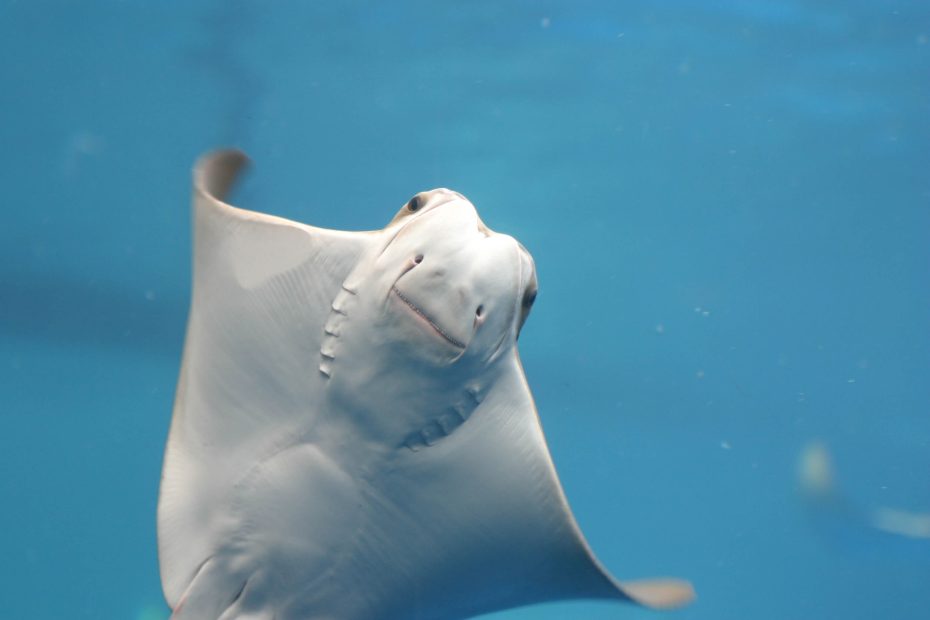If you have been on social media lately, you might be aware of North Carolina’s newest celebrity: Charlotte, a stingray that miraculously became pregnant in an aquarium tank with no male stingrays present. Her story has gone viral, and has been covered by CNN, BBC, Scientific American and other major media outlets as people theorize the reasons behind this seemingly biological impossibility.
There are two major standing theories to explain Charlotte’s miracle. As Charlotte shares her tank with two male white-spotted bamboo sharks, there has been speculation that she might be pregnant with hybrid “shark-rays.” This theory is supported by the fact that Charlotte has bite marks indicative of mating on her fin edges. Others believe that she is demonstrating a rare form of asexual reproduction called parthenogenesis that has been seen in some reptiles and fish, but has not been reported in stingrays.
While the public seems thrilled at the prospect of shark-ray babies, the chances of Charlotte conceiving a hybrid offspring with her shark tankmates are extremely improbable. Mating between two species is possible; you have probably heard of a horse-donkey mix called a mule, or a lion-tiger hybrid, artfully named liger or tigon. The ability of two species to reproduce depends on their genetic similarity. However, while the horse and donkey lineages separated only about 7 million–15 million years ago [1], the sharks and rays are estimated to have diverged over 300 million years ago [2]. This evolutionary gap gives sharks and stingrays a long time to accumulate genetic differences, making reproduction unlikely.
Scientists are much less skeptical about the possibility of Charlotte fertilizing herself through the process of parthenogenesis, in which an egg can develop into an embryo without sperm [3]. Parthenogenesis can happen through either apomixis, in which cells reproduce via mitosis, or automixis, which occurs with meiosis. While reproductive cells split genetic information equally during meiosis, cytoplasm and other cell materials are not uniformly divided. The cell with the most cellular “goodies” matures into the egg, while the other divisions are known as polar bodies. In automixis, these polar bodies fuse with the egg to fertilize it. While apomixis is common in plants and invertebrate animals, it is unlikely to happen in more complex organisms like stingrays, so it is more probable that Charlotte has experienced automixis.
Parthenogenesis is a neat trick for reproducing in biologically stressful situations, but comes with its own disadvantages. The offspring are nearly genetically identical to their mother, reducing diversity and increasing population vulnerability in the face of environmental fluctuations. Most offspring are not viable over a long term, and populations that rely on parthenogenesis for reproduction tend to go extinct [4]. This is why parthenogenesis is extremely rare in vertebrate animals, making Charlotte — and her baby — one of a kind!
Shark-ray hybrids or parthenogenesis? Place your bets in the last few days of Charlotte’s pregnancy. Regardless of the outcome, her story showcases the unpredictability and wonder of nature.
References
- [1] Huang, J., Zhao, Y., Bai, D., Shiraigol, W., Li, B., Yang, L., ... & Dugarjaviin, M. (2015). Donkey genome and insight into the imprinting of fast karyotype evolution. Scientific reports, 5(1), 14106.
- [2] Kuraku, S. (2021). Shark and ray genomics for disentangling their morphological diversity and vertebrate evolution. Developmental Biology, 477, 262-272.
- [3] Subramoniam, T. (2018). Mode of reproduction: invertebrate animals. Encyclopedia of reproduction, 6, 32-40.
- [4] Fujita, M. K., Singhal, S., Brunes, T. O., & Maldonado, J. A. (2020). Evolutionary dynamics and consequences of parthenogenesis in vertebrates. Annual Review of Ecology, Evolution, and Systematics, 51, 191-214.
Related Content
- From Fiction to Function: How Biomedical Innovation Thrives on Imagination
- In Defense of Reality TV
- The Powerhouse of the Cell: The Branding of Mitochondria
Want to read more from the Johns Hopkins School of Medicine? Subscribe to the Biomedical Odyssey blog and receive new posts directly in your inbox.
